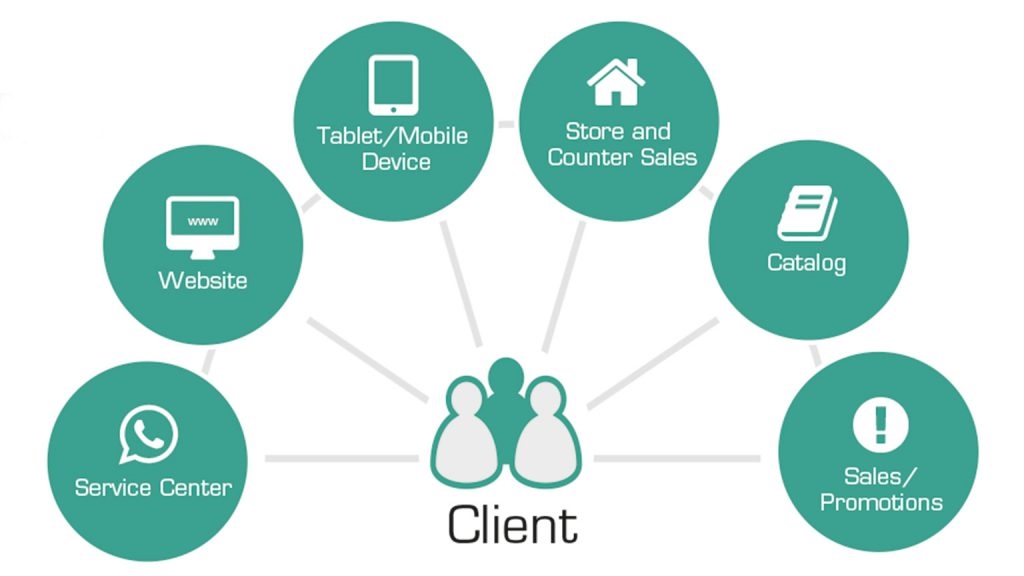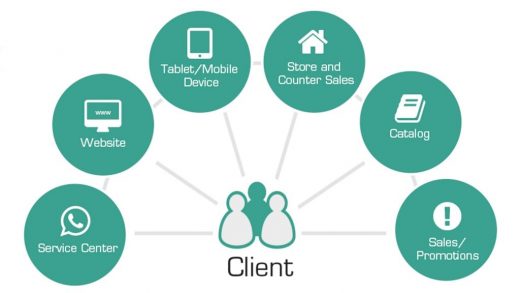Customer Engagement Strategies in the Retail Industry – A 2021 Outlook
Customer Engagement Strategies in the Retail Industry – A 2021 Outlook

We soon begin the second quarter of 2021 — and all retailers are looking forward to it with high hopes. 2020 was a disastrous year for the retail industry. Many retail stores were shut down, and those who survived are still struggling to stay afloat.
In such a time of crisis, engaging your customers is crucial. If you’re a retail store, follow these strategies to improve customer engagement.

Why Is Customer Engagement Crucial for Retail Businesses?
When we talk about customer engagement, most people think of large brands and SaaS businesses. Hardly any retail store comes to mind.
Which is your favorite brand? Think for a moment. Which brands came to your mind? Nike? Coca Cola? Adidas? Some fashion and apparel brands, maybe something in tech?
Did Walmart ever cross your mind? Or Costco? The Kroger Co.? These are the largest retail brands in the world, and yet, they fail to drive high customer engagement. On the contrary, smaller brands and startups, including SaaS companies and sports and fashion brands, easily drive engagement.
Let’s make a head-to-head comparison of retail business brands.
Walmart has 2.5 million followers on Instagram. Costco has 800k. On the other hand, Nike has 127 million Instagram followers. Huda Beauty, a fashion brand, has 48 million followers.
Why is there such a colossal difference? One reason is competition and the abundance of options. The global retail industry was valued at $ 24 trillion in 2018. The sector includes 7.1 million online retailers, of which 1.8 million are in the US. And that’s just the online figure. There could be almost the same number of offline retailers.
This gives customers myriad options to choose from. If they feel a product is pricey at one store, they’ll buy it from another place.
Secondly, the scope for engaging customers is bleak for retail brands. Why do you think Nike and Coca-Cola are so popular? Because they offer more than just products. Customers can relate to these brands on an emotional level.
When you look at Nike, you see positivity, toughness, and improvement. When you look at Coca-Cola, you see refreshment, quality, and authenticity. You don’t really see anything when you look at Walmart or Costco, do you?
Besides, most customers won’t care if 74% of brands disappeared from this planet. And the majority of brands in this list would likely be retail businesses.
Therefore, customer engagement is something retail brands should prioritize. We live in a digital age, where retailers like Amazon have managed to engage their customers in a hyper-competitive business landscape.
Customer Engagement Strategies for Retail Businesses
As a retail business, achieving high levels of customer engagement levels can be challenging. But it’s not rocket science, and most providers tend to overcomplicate it.
Here are some proven strategies that retail brands should use to drive customer engagement in 2021.
1. Build an Omnichannel Strategy
The coronavirus pandemic has taught us several business lessons. One of these lessons is that customers are mercurial, and their demands can change anytime.
A few years back, when we were entering the digital era, everyone speculated that brick-and-mortar retail would soon be dead. Here we are in 2021, and offline retail is still up-and-running, despite taking a massive blow due to COVID-19.

In a nutshell, you can’t rely on one medium of selling. Before the onset of the pandemic, you might’ve been selling either online or offline. But now, to engage your customers, you need to adopt an omnichannel strategy.
Developing a strong omnichannel strategy from scratch is a long and planned process. But the entire process can be boiled down to two points:
- Sell online and offline. Most of the products available in your physical store should also be available on your website and vice-versa.
- Integrate your online and offline marketing. Everything from your voice and tonality to brand colors and designs should synchronize on all channels.
Once you have an omnichannel strategy in place, it’s time to implement it. And that’s the tricky part because it’s not easy to drive engagement on multiple channels at a time.
Here’s where QR Codes can help. QR codes allow you to bridge the gap between online and offline marketing, thereby helping you streamline your omnichannel strategy.
For example, you can put up a custom QR code on product packaging and link it to your website. Customers can scan the code and check your website out. You can also include a code on your store walls, business cards, brochures, flyers, and banner ads.
In addition to linking the code to the website, you can attach it with your social profiles, specific product pages, promo codes, offers, etc.
2. Make Your Brand Human
Customers, especially B2C consumers, don’t want to buy from a faceless organization. When doing business, it’s easy to become formal and adopt a dry voice and tone. While this type of tonality may work with internal company communications, using it with your customers simply turns them off.
No one wants to do business with a robot. And no customer will ever complain about you being friendly, conversational, and approachable. When your customers interact with you, they should feel like they’re talking to a human.
So, how can you humanize your brand? First things first, address your customers as “you.” Like we’ve been talking to ‘you’ during this entire contact. Doing so shifts the focus from yourself to your customers.
Second, avoid jargon and technical terms. This step is more important in online marketing. If you’re selling low-calorie sugar, don’t go about the product saying that it has fewer calories and low sweetness index. Simply say that this product adds sweetness to your life but doesn’t let you gain weight.
3. Know Where Your Customers Are
If your customers are on YouTube, you should invest in increasing YouTube Subscribers. If you’re spending too much time and money on blogging, you’re wasting your resources.
Well, not technically wasting because blogging has its own benefits. But if your customers are on YouTube, investing in blogging won’t provide the desired returns.
Therefore, an essential aspect of increasing engagement for retail brands is to know where their customers spend their time. Even social media is divided into so many segments. If your customers are on TikTok and you’re running Facebook ads, you won’t get any results.
How would you know where your customers are? By doing in-depth research. Collect customer feedback and conduct surveys to understand customer preferences and what they want.
Another mistake that retailers make is they try to create a presence on all platforms and channels. While it’s true that you’ll find some customers on every marketing channel, if you’re a small business, you should stick to only the most popular ones.
For example, if the majority of your customers are on Pinterest, and you’re low on marketing budget, it’s alright to focus on Pinterest and overlook other channels.
4. Let Your Customer be the Ruler
In his book Building a StoryBrand, author Donald A. Miller says that customers aren’t looking for a superhero. They’re looking for a guide. In your story, your customer should be the superhero, and you – the brand – should be the guide that helps them achieve their goals. At the end of your story, it should be your customers who win, not you.
In simpler words, understand and prioritize your customers’ needs. Show them what they want to see, not what you want to show.
We live in an increasingly customer-centric world, where customers have all the power. You might have the most perfectly executed marketing strategy, but if your customers don’t approve of it, you won’t get the results.
Understand your customers well, know what they want — and show them what they want to see. If you tell the story they want to hear, they’ll engage with your brand.
5. Offer Personalized Experiences
Personalization has become a buzzword among online retailers. But it’s a buzzword that you should be going after. Delivering personalized experiences across all retail channels can go a long way in engaging your customers.
Artificial Intelligence (AI) helps you deliver personalized experiences. When a customer visits your site, you get access to a wealth of data, such as customers buying behavior, buying history, etc. AI and machine learning (ML) algorithms analyze and utilize this data to provide curated experiences.
Suppose a customer comes to your website, visits the landing pages of a particular kind of product, but doesn’t purchase it. He comes again the next day, checks out the same products, but doesn’t make a purchase. You track the customer’s browsing history and find out that he’s been searching for the same products on other websites.
Now, you know what the customer wants. You can utilize cookies to identify when the customer returns to your website. When he does, instead of showing him your regular homepage, you can display the products and offers that align with his requirements.
The scope for personalization extends to brick-and-mortar stores. When a customer makes a purchase from the store, you can store her data in your POS billing system. You can then analyze your customers’ buying behavior and send them targeted offers via email and social media.
6. Blend the Digital and Physical
Earlier, we talked about omnichannel marketing and how QR codes can help you bridge the online-offline gap. Along with QR codes, you can implement numerous other strategies that can help you provide blended experiences to your customers.
Offering endless aisles has emerged as a popular trend among retail stores. Retailers allow their customers to browse their entire product catalog, including products that are not currently in stock. Customers can select the products and place an order. Once the order arrives, they can either pick it up from the store or get it delivered to their doorstep.
Providing this type of shopping experience has two benefits. First, you eliminate the frustration customers get when they find that the product they need is out of stock. Second, it saves you from managing a heavy inventory.
Proximity marketing is another emerging strategy among local businesses. It allows you to send targeted advertisements to customers’ mobile phones when they come near your business. Proximity marketing uses beacons to send marketing content to mobile devices.
Curbside pickup can also help you provide engaging customer experiences. While curbside pickup works great for restaurants, it can do wonders for retail stores as well. For example, you can allow customers to send you their shopping lists. You can pack all the items and then inform your customers. Your customers can then come to the store, make the payment, and take their package.
Conclusion
With the retail landscape becoming more competitive than ever, brands need to focus on customer engagement. It’s essential to understand your customers and their requirements and then fulfill them by delivering curated experiences.
Keep in mind that the retail industry is evolving, and you’ll want to stay updated with the latest changes and trends.
The post Customer Engagement Strategies in the Retail Industry – A 2021 Outlook appeared first on ReadWrite.
(104)


